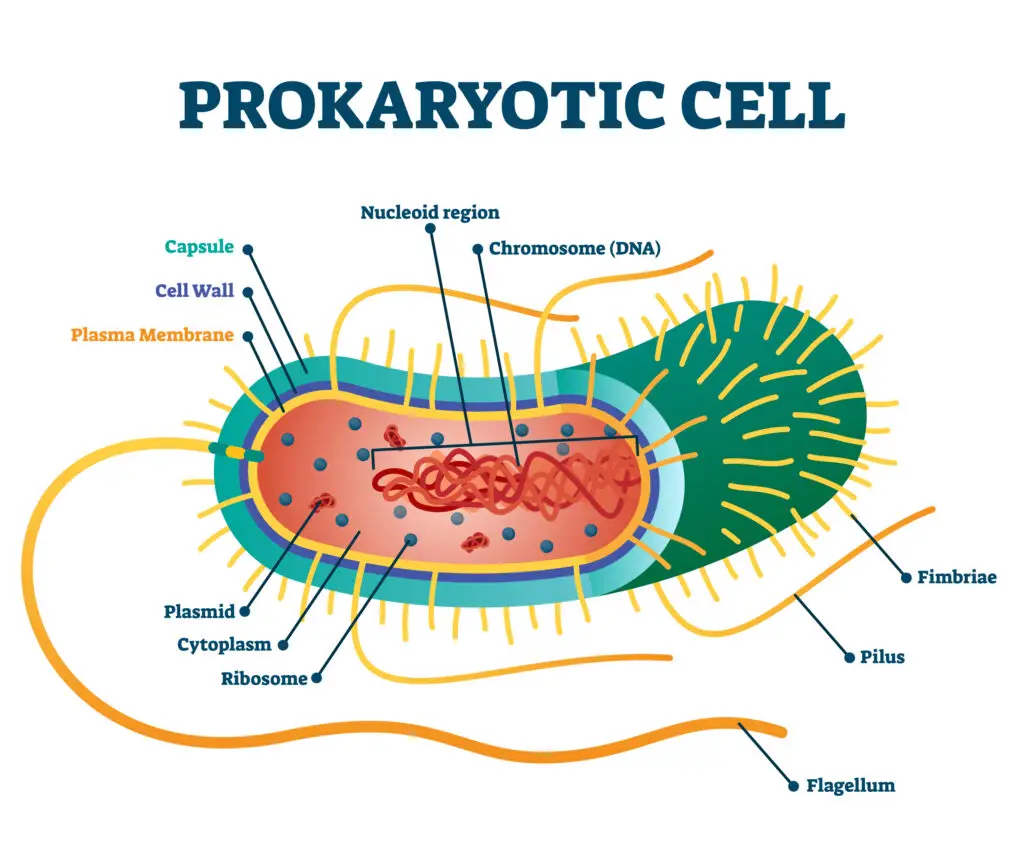Prokaryote
Definition of Prokaryote
A prokaryote is a single-celled organism that lacks a nucleus and membrane-bound organelles. Prokaryotes include bacteria and archaea and are generally simpler in structure than eukaryotes.
Prokaryote vs. Eukaryote
One big difference is that eukaryotic cells have a nucleus, while prokaryotic cells don’t. In eukaryotes, the nucleus holds the cell’s DNA and controls its functions. But in prokaryotes, the DNA just floats around in the cell because there is no nucleus.
Eukaryotes, like plants, animals, and fungi, are usually multicellular (made of many cells), though some, like amoebas, are single-celled. Prokaryotes, like bacteria, are always single-celled. This makes them simpler and smaller than eukaryotic cells.
Eukaryotic cells also have special structures called organelles, like mitochondria and chloroplasts, which perform specific jobs. Prokaryotic cells don’t have these organelles. They perform all their cell functions without these extra structures.
Finally, prokaryotic cells are usually smaller than eukaryotic cells. Because they are simpler, they don’t need as much space for all the parts found in eukaryotic cells.
In short, eukaryotes have a nucleus, complex structures, and are often multicellular, while prokaryotes are simpler, lack a nucleus, and are always single-celled.
Cellular Structure
Prokaryotic cells have a simpler structure compared to eukaryotic cells. They don’t have a nucleus or many of the specialized parts (organelles) found in eukaryotes.
The DNA in prokaryotes floats freely in the cell instead of being in a nucleus. This DNA contains all the instructions needed for the cell to grow and reproduce.
Prokaryotic cells also have a cell membrane. The cell membrane surrounds the cell and controls what goes in and out, acting like a protective barrier.
Outside the cell membrane, many prokaryotic cells have a cell wall. The cell wall gives the cell its shape and extra protection.
Some prokaryotic cells have flagella (singular: flagellum), which are tail-like structures. Flagella help the cell move around by acting like tiny propellers.
Prokaryotes also have ribosomes, small structures that make proteins needed for the cell’s functions. These ribosomes float freely within the cell since there are no other compartments.
In summary, prokaryotic cells have a simple structure with free-floating DNA, a cell membrane, sometimes a cell wall, ribosomes, and sometimes flagella for movement. This simplicity makes them different from the more complex eukaryotic cells.
